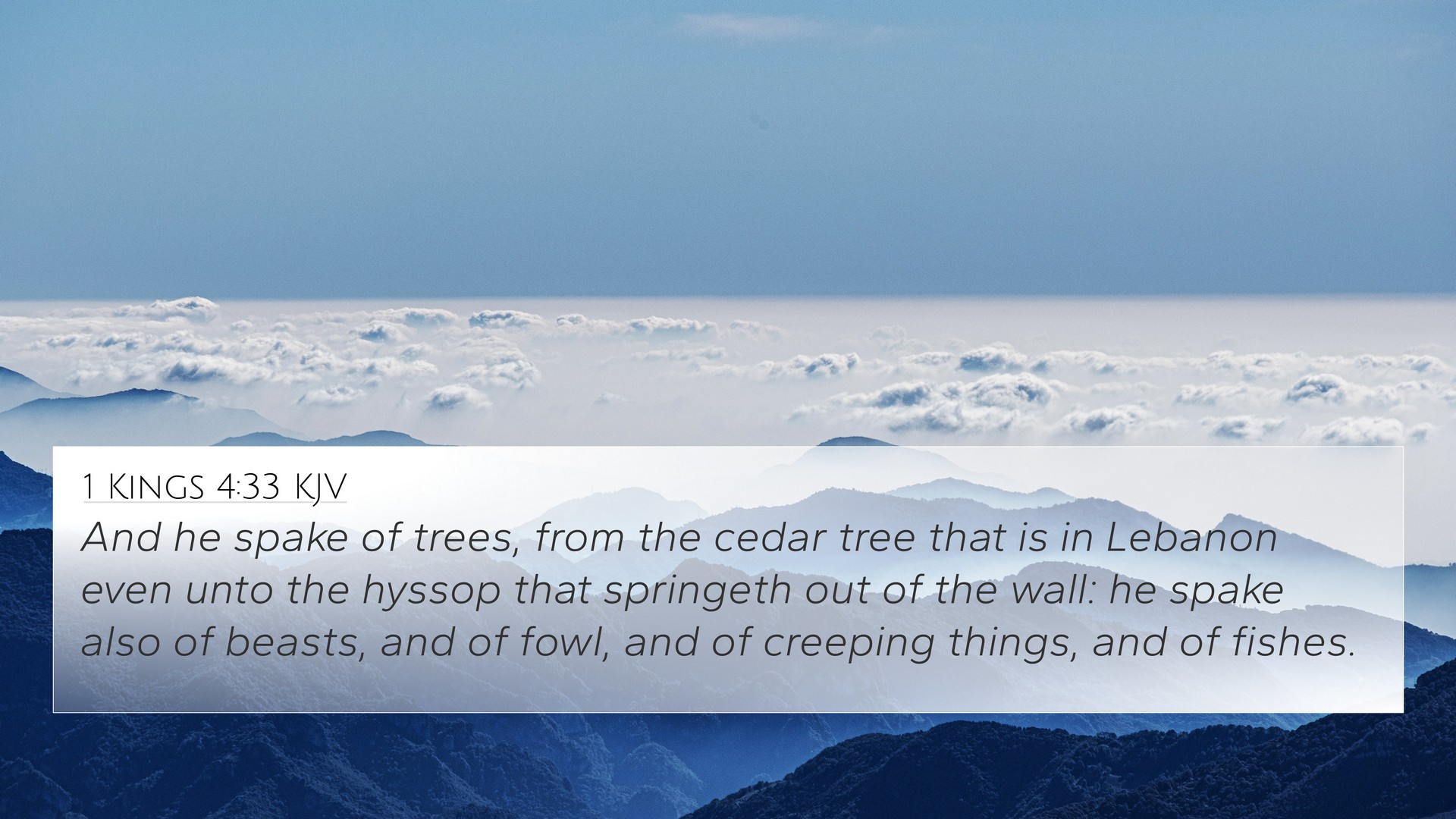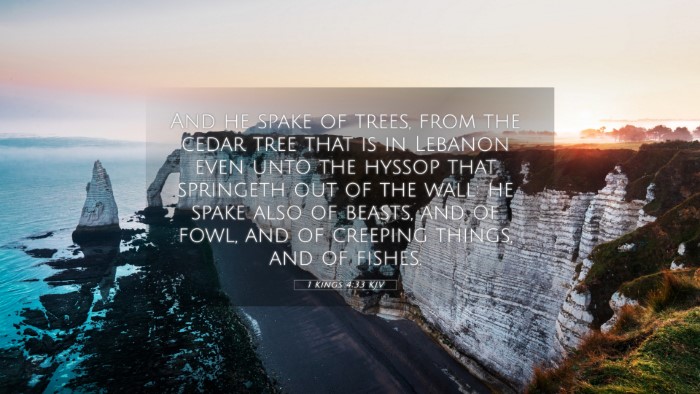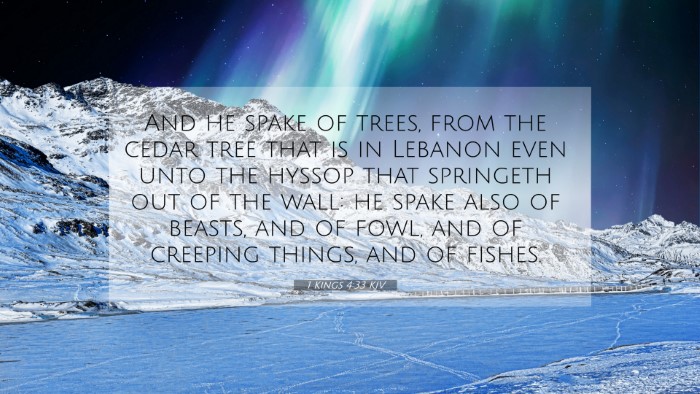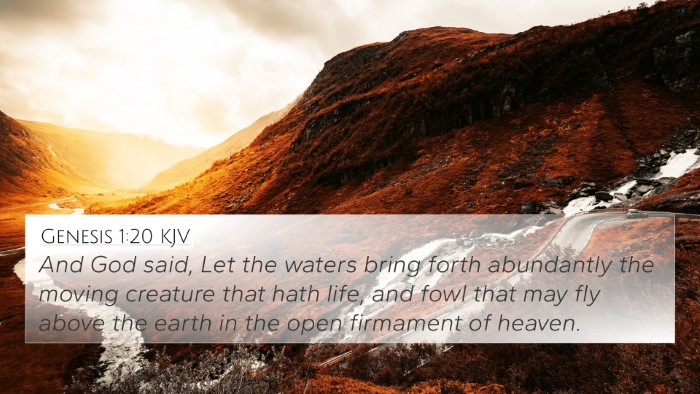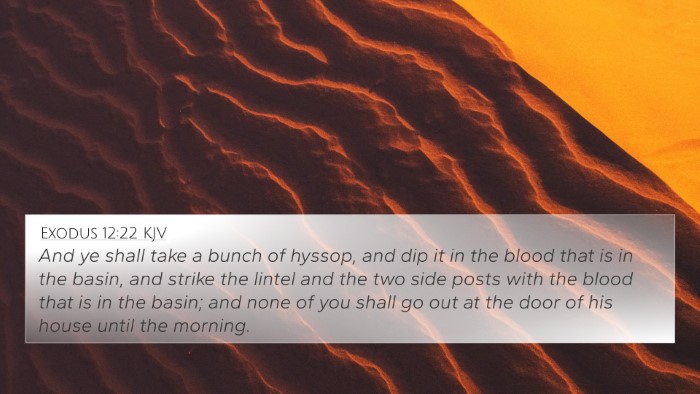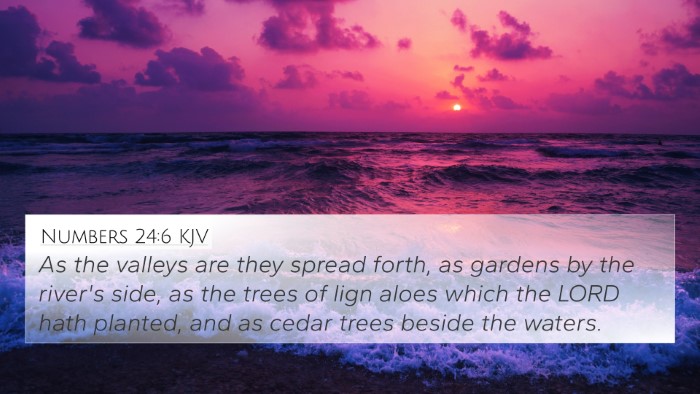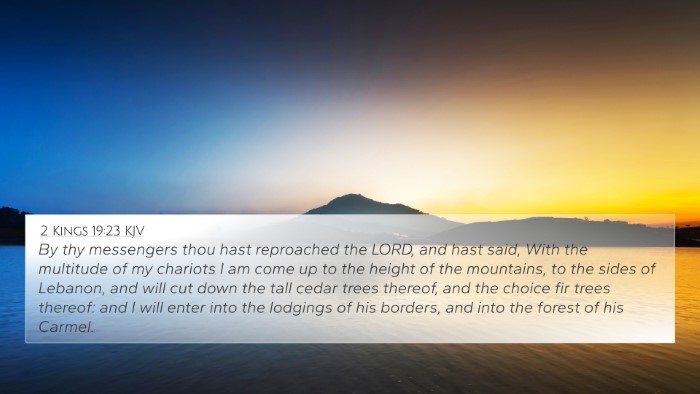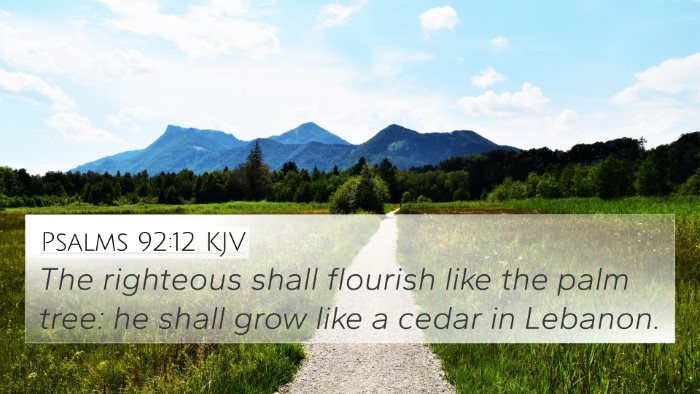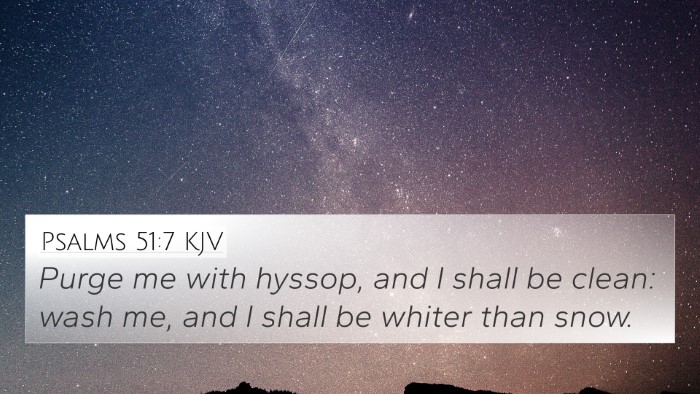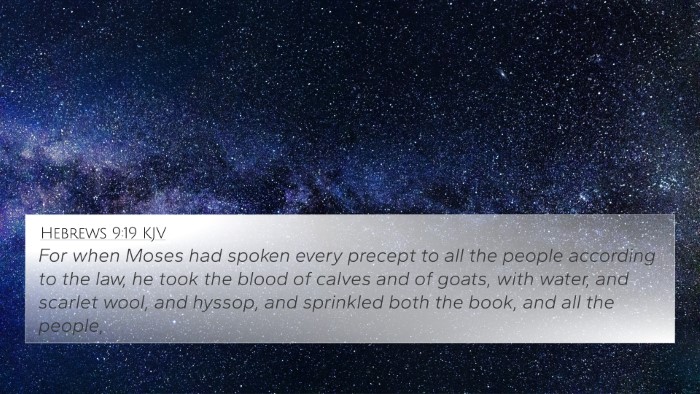Understanding 1 Kings 4:33
1 Kings 4:33 states: "And he spake of trees, from the cedar tree that is in Lebanon even unto the hyssop that springeth out of the wall: he spake also of beasts, and of fowl, and of creeping things, and of fishes."
This verse highlights Solomon’s exceptional wisdom and knowledge, particularly regarding natural elements and living creatures. The verse conveys the breadth of Solomon's understanding not only of mankind and governance but also of the created world.
Commentary Insights
Matthew Henry's Commentary
Matthew Henry notes that Solomon was renowned for his wisdom, which extended to all manner of subjects, including botany and zoology. This indicates that his wisdom was both practical and profound, showcasing how he observed God's creations and learned from them. His ability to discourse on diverse subjects elevated his royal authority and influence.
Albert Barnes' Notes
Albert Barnes emphasizes how Solomon’s discourse encompassed the greatest and the least aspects of nature - from majestic cedar trees to humble hyssop. This illustrates the idea that wisdom recognizes and values all parts of creation, emphasizing that nothing is too great or too small to be understood. Furthermore, Barnes suggests that the universality of Solomon's knowledge made his wisdom known throughout the lands.
Adam Clarke's Commentary
Adam Clarke discusses the specifics of the trees mentioned, indicating that the cedar of Lebanon symbolizes strength and durability, while the hyssop represents humility. Clarke further asserts that Solomon's wisdom presented a harmonious view of creation, enhancing the understanding of God’s creations and showcasing the interdependence of all life forms.
Bible Cross-References
Understanding 1 Kings 4:33 can be enhanced through various cross-references that draw connections between biblical texts and themes.
- Job 12:7-10: Encouragement to consider the natural world to gain understanding.
- Psalms 104:24-25: A hymn celebrating the diversity of creation.
- Proverbs 30:24-28: Observations about the creatures of the earth and their wisdom.
- Ecclesiastes 3:18-20: Reflecting on humanity’s connection to other creatures.
- Matthew 6:26: God's care for birds, emphasizing wisdom and the value of life.
- Luke 12:27: Consider the lilies, underscoring wisdom found in nature.
- Romans 1:20: Creation reveals God's invisible attributes, inviting reflection on wisdom.
- 1 Corinthians 15:39: The different types of flesh among living creatures as a testament to God’s diversity.
- Psalms 148:7-10: Call to all creatures to praise the Creator.
- Isaiah 40:6-8: The ephemeral nature of humans versus the eternal nature of God's word.
Thematic Connections
The themes surrounding Solomon's wisdom in 1 Kings 4:33 prompt reflection on the interconnectedness of knowledge across disciplines. Scripture reveals that wisdom is not confined to theological understanding but permeates all areas of knowledge, including nature, ethics, philosophy, and science.
- Nature and Wisdom: The exploration of nature leads us to a deeper understanding of divine wisdom.
- God's Creation: Recognition of the intricacies of creation demonstrates God's greatness.
- Unity in Diversity: All aspects of creation are interrelated and hold significance in God’s plan.
Tools for Bible Cross-Referencing
To dive deeper into biblical theology and understand context, several tools can aid in cross-referencing:
- Bible Concordance: An alphabetical list of words to explore scripture themes.
- Bible Cross-Reference Guide: Organized connections between related verses.
- Cross-Reference Bible Study: Techniques for studying interconnected scriptures.
- Bible Reference Resources: Comprehensive materials for deeper study.
- Cross-Referencing Methods: Approaches to understanding scriptural ties.
- Bible Chain References: A method of linking verses by themes or topics.
- Comparative Bible Studies: Researching similarities and thematic parallels.
Conclusion
In summary, 1 Kings 4:33 serves as a profound reminder of the wisdom that encompasses both the grand and minute aspects of creation. The insights drawn from public domain commentaries illustrate the overarching themes of understanding the world God has created and the interconnectedness of all living things. Through the suggested cross-references, one can build a comprehensive study that illustrates how these scriptural themes interconnect, thereby enriching one’s knowledge of the Bible and its teachings.
